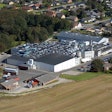
In pig production the impact of health on profitability is immense and usually goes beyond the moment of the clinical outbreak. Early infections have a negative impact on the live weight of pigs at the time of weaning and the end of the nursery phase.
Furthermore, lightweight pigs are more susceptible to diseases later in life. Some of the most important bacterial pathogens during the most critical phases of pig production (farrowing and nursery) are Streptococcus suis, Staphylococcus hyicus, Haemophilus parasuis, and Pasteurella multocida.
In pigs, amoxicillin is used during the early stages of production to treat sows or piglets against some respiratory infections caused by P. multocida and S. suis. Moreover, amoxicillin also can be effective against S. hyicus and H. parasuis. Ampicillin is roughly equivalent to its successor, amoxicillin, in terms of spectrum and level of activity as can be seen in Figure 1. Both molecules are broad-spectrum beta-lactam antibiotics with a bactericidal mode of action that are approved for veterinary use.
For pigs, aqueous and oily products for parenteral administration are approved as well as premixes and water-soluble powders for oral medication via feed or water. Below are some advantages and disadvantages of each type of treatment from a practical point of view.
Injectable treatments
The main advantages of injectable treatments are:
Fast reaction . When dealing with disease outbreaks related with S. suis and H. parasuis it is crucial to guarantee that pigs receive the right dose as soon as possible.
Better bioavailability . Several pharmacokinetic studies show that after an intramuscular administration of amoxicillin, the bioavailability was approximately 83 percent, which can be even higher when using a long-acting formulation of amoxicillin.
Independent of external factors . Pharmacokinetics and stability of amoxicillin are not affected by feed intake, health status of the animal, water pH or manufacturing process of feed.
Prudent use of antibiotics . Even though the degree to which the usage of antibiotics in veterinary medicine contributes to the appearance of resistant human pathogens is not yet fully proven, the use of injectable products is perceived as causing less selection of resistant micro-organisms than the use of oral forms.
Targeted treatments . while the dosing of the treatment becomes more complex, it can also be an opportunity to give a more precise dose to every pig based on its live weight and not on its feed or water intake.
However, there are also some disadvantages associated with the use of injectable treatments:
Labor intensive . For injectable treatments, the requirements for manual labor are obviously higher.
Compliance . Failing to identify pigs that require follow-up treatments negatively affects the compliance or completing the full treatment.
Broken needles . Every time pigs are injected, there is a certain risk of leaving broken needles inside the pigs that can condemn the resulting carcass with resulting loss in profitability.
Used needles . In many places, there is the problem of properly disposing used needles.
In-feed treatments
Adding amoxicillin in pig feed presents two main advantages:
Large number of pigs can be treated with low labor . When a medication is needed for a large group of animals the work can be very time-consuming and in-feed treatments are very appropriate.
Compliance . If a treatment has to go on for several days, the chances of missing some pigs are lower when the medication is included in the feed.
However, there is always a down side:
Reaction time . It may take days until the treatment is available for the animals. When an outbreak appears, the feed has to be ordered, manufactured, sent to the farm and finally, the feed bin must be empty before the pigs receive the medication.
Feed intake . the health condition of the pigs affects feed intake, and a percentage of animals may not eat enough to get the right dose.
Manufacturing issues . Even though there are differences among products available in the market, the amoxicillin molecule stability is affected by feed pelleting. Also, while the feed is mixed there usually is a segregation of the premix from the feed which may lead to irregular dosing within the same batch.
Risk of gut disbiosis. When using oral amoxicillin (or other antibiotics) disbiosis could lead to impaired gut health in piglets.
Water application
The advantages of water are similar to some of the ones for in-feed treatments:
Treating large number of pigs . Water treatments allow a large number of pigs to be treated at once with low labor costs, but here application can be immediate and more precise.
Targeted treatments . Producers can have targeted treatments by room or even by pen within the same building. In addition, the treatment duration is as required and not until the feed bin is emptied.
Follow-up treatment . Amoxicillin in water medications is effective as a follow-up treatment, especially when an outbreak appears. A quick therapeutic dose (by using with an injectable dosage) and then maintain through water medication a good plasma concentration for several days.
And, some of the disadvantages of water application include:
Dosage and treatment compliance . This normally is not as good as for medicated feed manufactured at a feed mill, but it is easy to improve it with the right facilities and training.
Low pH . Some farms have water with low pH or use acidifiers. The solubility of amoxicillin is affected in acidified water, according to a study, it reacted with citric acid, forming white precipitate or crystallizing.
Water intake . The health condition of the pigs also affects water intake. Moreover, there is evidence that E.coli-induced diarrhea reduces the availability of amoxicillin on the first day of administration in drinking water.
Choosing the best method
Some of the most important pathogens for the early stages of pig production are bacteria, which can be treated with amoxicillin. Like most antibiotic treatments, when deciding which application method to use there are numerous criteria to take into consideration. These are summarized in Figure 2, and each pig farm and situation must define which method is the more suitable at every moment.

















